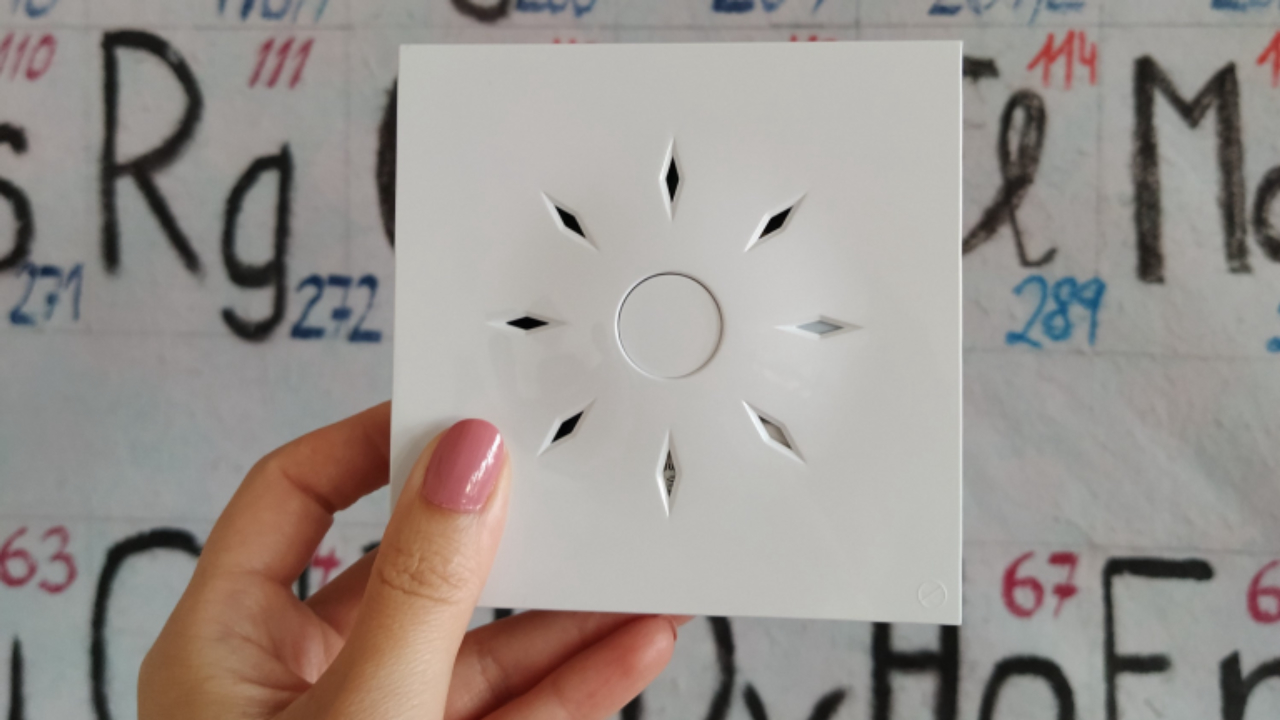
Why watch out for high concentrations of carbon dioxide (CO2)? Indoors, high levels cause fatigue, loss of concentration, headaches and even nausea. In a small area where a large number of people are concentrated, this situation occurs very often. Over a period of nine months, the Prague municipal company Operátor ICT (OICT) and the technology company SimpleCell Consulting, in cooperation with the Gymnasium Na Vítězné pláni in Nusle, tested intelligent sensors that monitor CO2 levels.
Their findings from the field have clearly demonstrated that installing a simple IoT meter that can alert on poor air quality is of great benefit. Due to the testing, it is clear that similar technology for monitoring the indoor environment is not only suitable for buildings designated for education, but would also find its application in office buildings, retirement homes, or anywhere where a large number of people are concentrated in confined indoor spaces and thus at risk of exceeding the CO2 hygiene standard.
As part of the "Healthy Classroom" pilot project, the Sigfox IoT technology-based CO2, temperature and humidity concentration meters were tested in the gymnasium classrooms in the 2021/2022 school year, specifically from 1st October 2021 to 30th June 2022. All classrooms of the gymnasium were equipped with this device. Thanks to the IoT sensors, the teachers recognized in time the moment when it was necessary to ventilate the classroom to restore a hygienically healthy environment. In the winter months, they could then ventilate only when the air quality was not good, thus avoiding unnecessary heat and energy loss. At the same time, the tested sensors measured room temperatures even when there was no traffic in the building. By continuously monitoring the temperatures, wasteful heating can be prevented by regulating the amount of energy supplied in a timely manner, e.g. at night, on weekends and holidays.
"In the Prague gymnasium, we have tested technology that monitors not only CO2 levels, but also indoor temperature and humidity. And it is precisely to test modern technology in the everyday life of the city that is one of our tasks for Prague. The pilot project turned out to be excellent and helped to define the individual processes and procedures necessary for the effective use of IoT indoor climate meters. Therefore, based on its evaluation, we would recommend that in the next phase we consider extending the technology especially to buildings where insulation and window replacement have been carried out in recent years without additional installation of forced ventilation systems. In this pilot project, we also tested a collaboration between a private and a public entity, where each party covered its own costs. This cooperation worked exemplarily, for which everyone is to be thanked," says OICT CEO Tomáš Barczi. The Healthy Classroom pilot project came 2nd in the eGovernment The Best 2022 competition, in the category of city projects.
"Measurements have shown that during one lesson the CO2 concentration can increase by multiples of the limit values. To make it easier and clearer to evaluate the pilot project, we at OICT, specifically our Golemio data platform team, developed a dashboard that displays the measurements from the installed meters. The dashboard shows both the actual air quality data in each classroom and a summary of how often individual educators responded to indications of poor air quality. From the results obtained, we can recommend that it is optimal to use sensors that allow the measurements to be updated at one-minute, or at most two-minute, intervals. It is not necessary to equip the meter with a display; coloured LEDs, which work on the principle of traffic lights, are sufficient. The green colour indicates safe CO2 levels, orange indicates limit values and red indicates undesirable concentrations and the need for ventilation," summarises Petr Suška, Director of Smart City, Innovation and Project Management at OICT.
"The results of this effective collaboration have shown that by deploying an IoT sensor to monitor CO2, we can not only positively influence and prevent human health, which is a key and most important goal, but also monitor and regulate the energy consumption of buildings and thus achieve significant financial savings. We are glad that we could successfully implement this already proven Sigfox solution again on this project and show the benefits of Sigfox IoT technology in people's everyday life," says Jan Soukal, Managing Director of SimpleCell Consulting.
Energy savings
Thanks to a detailed overview of the temperature in the building, it is possible to determine exactly when overheating is occurring in the building and it is therefore possible to reconfigure the measurement and control system to save energy costs. During the pilot, an OICT energy specialist monitored both temperature and humidity. He monitored the humidity in each classroom in relation to its changes during ventilation. In the case of temperature, he monitored overheating of classrooms during warm months; overheating or low temperature in monitored rooms during winter months; and classroom temperature on days when classes were not in session. The Gymnasium was kept informed of the findings and could thus react promptly to the current situation if necessary.